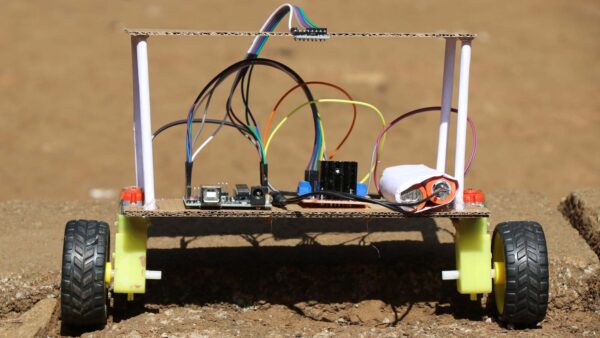Technology Resources
The Complete Guide to Sensors for Robotics
Introduction
Sensors are fundamental to programming robotics. They are used to recognize environmental data (things like temperature, light levels, and motion) and provide the information they collect to computer code. If the computer code is looking for that information, it will use it to perform an action (like move something, light something, or communicate with a device or human).
This article describes the types of sensors that are common to robotics and teaching programming.
Movement and Position
This category includes speed, acceleration, angle, and direction. Motion can be forward, backward, side-to-side, or up and down. Direction and position are determined using magnetic fields. Determining position may also require using vision capabilities to sense nearby objects and features to compare to a map.
Sensors in this category include:
Accelerometer
Accelerometers can recognize angle or tilt, up and down movement, and side to side movement. They are use to identify motion of the accelerometer itself and whatever it is attached.
Magnetometer
A magnetometer uses magnetic fields to determine direction. A compass is a type of magnetometer.
Light and Vision
Vision sensors are used for navigating, recognizing objects, sensing light levels and determining range and proximity.
Light sensors can be used to measure motion in another object
Types of light sensors include:
Photodiode
Photodiodes are devices that change their level of electrical resistance depending on the light level. The amount of resistance identifies the level of light.
LED
LEDs can be used to sense light levels in a manner similar to photodiodes. They are less sensitive than photodiodes but are also less expensive.
Ambient Light Sensor
Ambient light sensors are photodetectors that identify the ambient light level. They are used on devices like smartphones automotive display panels to adjust brightness according to the amount of ambient light.
Touch and Pressure
These sensors detect touch and pressure along with force and torque. Force is the amount of effort it takes to move something in a straight line while torque is the amount of pressure it takes to rotate an object.
Capacitive Touch Sensors
These use the electricity of the human body to identify the location of touch. They are commonly used on smart phone screens.
Resistive touch sensors
These sensors use a resistive surface between two semi-flexible layers. When someone presses on the surface, an electrical connection is made and the location is identified.
Temperature and Humidity
Temperature sensors measure their temperature and the temperature of the air around them. This can be useful in industrial settings where materials need to be at a specific temperature for processing.
Sensing the temperature of an object is also useful to determine if something is overheating.
Humidity sensors can be used to determine moisture levels in homes or in agricultural settings.
Types of temperature and humidity sensors include:
Resistance Temperature Detector
The resistance level of a Resistance Temperature Detector (RTD) changes according to its temperature. The connection between resistance and temperature depends on the type of metal that is used to make the RTD.
These temperature sensors have a limited temperature range but they are compact and durable.
Pinless Moisture Meter
This type of moisture meter uses the conductivity of moisture to determine the moisture level.
Sound
Sound sensors use vibration to determine the sound level.
Microphone
A microphone is a sensor that can recognize sound waves, determine their level, and transfer that information in the form of a recording or data that it passes to computer code for processing.

